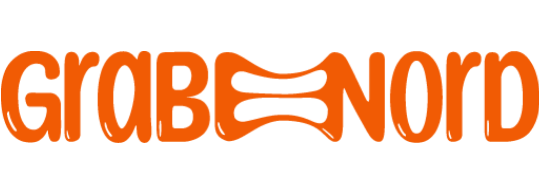Vegan Leather: Materials and Future Trends
Vegan Leather: A Sustainable Revolution in Materials.In recent years, the quest for sustainable and ethical alternatives to animal-derived products has led to significant innovations in the materials industry. Among these, vegan leather has emerged as a frontrunner, offering a cruelty-free and environmentally friendly option for fashion, automotive, and interior design sectors. This article delves into the essence of vegan leather, exploring its materials, sustainability aspects, and the future trends that are shaping this rapidly evolving market.
Key Takeaways
- Sustainability: Vegan leather presents an eco-friendly alternative to traditional leather, reducing the environmental impact associated with animal farming and leather processing.
- Innovation: Continuous advancements in technology have introduced a variety of materials into the vegan leather market, broadening its applications and appeal.
- Market Dynamics: Growing consumer awareness and demand for sustainable products are driving the expansion of the vegan leather market, with significant opportunities for industry players.
What is Vegan Leather or Faux Leather?
Vegan leather, also known as faux leather, artificial leather, or synthetic leather, is a material designed to mimic the qualities of real leather without the use of animal skin. It encompasses a wide range of materials, including polyurethane (PU), polyvinyl chloride (PVC), and innovative plant-based materials such as cork, mushroom mycelium, and fruit waste. The development of vegan leather aims to offer a sustainable, ethical, and versatile alternative to traditional leather, catering to the growing demand for cruelty-free and eco-conscious products.
Comparing Vegan and Animal Leather
- Environmental Impact: Traditional leather production is associated with high levels of water usage, greenhouse gas emissions, and chemical pollution. Vegan leather seeks to mitigate these impacts through more sustainable production processes.
- Ethical Considerations: Vegan leather provides an ethical alternative for consumers who prioritize animal welfare and seek to avoid products derived from animal exploitation.
- Versatility and Innovation: With advancements in material science, vegan leather now offers a wide range of textures, colors, and properties, making it suitable for various applications beyond fashion, including upholstery and automotive interiors.

Types of Vegan Leather
The versatility of vegan leather is evident in the array of materials used in its production. Each type offers unique characteristics and benefits, catering to different preferences and applications.
| Material | Source | Characteristics | Applications |
|---|---|---|---|
| PU (Polyurethane) | Synthetic | Durable, flexible | Fashion, upholstery |
| PVC (Polyvinyl Chloride) | Synthetic | Waterproof, less breathable | Bags, shoes |
| Cork | Cork Oak Tree | Lightweight, waterproof | Accessories, footwear |
| Mushroom Mycelium | Fungi | Biodegradable, soft | Luxury fashion items |
| Pineapple Leaves (Piñatex) | Pineapple Waste | Durable, sustainable | Clothing, accessories |
This exploration into the types of vegan leather highlights the industry's commitment to innovation and sustainability. By leveraging a range of materials, vegan leather is not only challenging the traditional leather industry but also offering consumers and manufacturers a viable, ethical alternative.
Alternatives to Real Traditional Leather: For Clothing, Accessories, and More
The shift towards sustainable fashion and eco-conscious consumer choices has accelerated the search for and development of alternatives to real traditional leather. Vegan leather offers a promising solution, extending its reach beyond clothing to accessories, automotive interiors, and home furnishings. This diversity not only showcases the material's versatility but also its potential to redefine industry standards for ethical and environmental responsibility.
Eco-Friendly Alternatives Across Industries
- Fashion: Vegan leather is used in producing jackets, pants, and dresses, providing a cruelty-free option without compromising on style or quality.
- Accessories: From wallets to belts and bags, vegan leather accessories are becoming increasingly popular for their durability and ethical appeal.
- Automotive: Some car manufacturers are incorporating vegan leather into their interiors, offering luxury and comfort without the ethical and environmental cost.
- Home Decor: Vegan leather furniture and decor items are on the rise, favored for their sustainability and ease of maintenance.
The Sustainability Debate: Comparing Real and Vegan Leather in The Fashion Industry
The discussion around the sustainability of real versus vegan leather is complex and multifaceted. While vegan leather presents an ethical and potentially lower-impact alternative to animal leather, the environmental footprint of both materials depends on numerous factors, including the resources used, production processes, and the product's lifespan.
Environmental Impact of Real Leather
- Resource Intensive: The production of animal leather requires significant amounts of water and land, contributing to deforestation and water scarcity.
- Pollution: Leather tanning processes often involve toxic chemicals, posing risks to both the environment and human health.
Environmental Impact of Vegan Leather
- Material Source: Synthetic vegan leathers, like PU and PVC, rely on fossil fuels, raising concerns about carbon footprint and recyclability. However, newer, plant-based alternatives are setting new sustainability benchmarks.
- Production Process: Innovative production methods are being developed to reduce energy consumption and eliminate harmful chemicals, making vegan leather a more eco-friendly option.
The Path Forward
The key to maximizing the sustainability of vegan leather lies in continuous innovation, such as developing bio-based polymers and improving recycling processes. Consumer awareness and demand for transparency can also drive the industry towards more sustainable practices, making the choice between real and vegan leather not just a matter of ethics but of environmental stewardship.
Also Read
Vegan Leather Market Overview
As we explore the burgeoning market for vegan leather, it's clear that this material is not just a fleeting trend but a significant shift towards sustainable consumerism. The vegan leather market is witnessing robust growth, fueled by consumer awareness, technological advancements, and an increasing number of brands committing to ethical and eco-friendly practices.
Market Growth and Segmentation
The global vegan leather market is segmented by source material, application, and geography. Plant-based leathers are gaining traction, with innovations in materials derived from fruit waste and other natural sources capturing consumer interest. The fashion industry remains the largest consumer of vegan leather, although automotive and furniture applications are rapidly expanding.
Leading the Way: Major Players in the Vegan Leather Market
A mix of established companies and innovative startups are shaping the vegan leather landscape. These players are not only contributing to the market's growth but are also pivotal in driving advancements in material technology and sustainability practices.
What are the driving factors and opportunities in the vegan leather market?
The vegan leather market is propelled by a confluence of social, economic, and environmental factors, each contributing to its expanding footprint across various industries. Understanding these drivers is crucial for stakeholders looking to capitalize on the opportunities that this burgeoning market presents.
Key Driving Factors
- Consumer Awareness and Ethical Consumption: A growing segment of the global population is becoming increasingly conscious of the environmental impact and ethical implications of their consumption choices, fueling demand for sustainable and cruelty-free products like vegan leather.
- Technological Advancements in Material Science: Innovations in biofabrication, recycling technologies, and the development of new plant-based materials and plant based products have significantly improved the quality, durability, and appeal of vegan leather.
- Regulatory Support and Environmental Policies: Governments and regulatory bodies worldwide are implementing policies aimed at reducing carbon footprints and promoting sustainable practices, indirectly supporting the growth of eco-friendly alternatives such as vegan leather.
Opportunities in the Market
- Expansion into New Markets and Segments: The versatility of vegan leather allows for its application in diverse sectors, from fashion and accessories to automotive interiors and home decor, presenting ample opportunities for growth.
- Collaborations and Partnerships: Opportunities for partnerships between startups, established brands, and technology providers can accelerate innovation and market penetration of new vegan leather products.
- Sustainability as a Competitive Advantage: Companies that prioritize sustainability in their product lines and operations can leverage this as a unique selling proposition (USP), appealing to the environmentally conscious consumer base.
What are the major trends that will shape the market in the future?
The future of the vegan leather market is being shaped by several emerging trends, reflecting the evolving consumer preferences, technological breakthroughs, and the global push towards sustainability.
Sustainability Beyond Material
- Circular Economy and Recycling: The integration of circular economy principles, where the lifecycle of products is extended through recycling and reuse, is becoming increasingly important. Innovations in recycling vegan leather and creating closed-loop systems are expected to gain traction.
- Collaboration Across Industries: Cross-industry collaborations are fostering innovation in vegan leather, with technology companies, material scientists, and fashion brands working together to develop and refine sustainable materials.
- Customization and Personalization: Advances in manufacturing technologies are enabling more personalized and customized vegan leather products, catering to individual consumer preferences and further driving market growth.

Which are the leading players in the Vegan Leather Market?
The vegan leather market boasts a dynamic ecosystem of players, ranging from startups focusing on innovative materials to established companies expanding their sustainable product offerings. Some of the leading companies in this space include:
- Material Innovation Initiative (MII): Focused on accelerating the development of sustainable materials.
- Bolt Threads: Known for their development of Mylo, a mycelium-based leather.
- Ananas Anam: The creator of Piñatex, a natural leather alternative made from pineapple leaf fibers.
- Modern Meadow: Pioneering biofabricated materials that offer a sustainable alternative to traditional leather.
These companies are at the forefront of the vegan leather revolution, driving both the market's growth and its direction towards greater sustainability and innovation.
The Future of Vegan Leather: Trends and Predictions
As we stand on the cusp of a new era in materials science and ethical consumerism, vegan leather is poised to play a pivotal role in shaping the future of multiple industries. From fashion to automotive and beyond, the trajectory of vegan leather is marked by promising trends and bold predictions.
Sustainable Innovations Lead the Way
The relentless pursuit of sustainable and eco-friendly alternatives will continue to drive innovation in vegan leather, with a focus on reducing environmental impact through novel materials and cleaner production processes.
Widening Consumer Acceptance
As awareness grows and quality improves, consumer acceptance of vegan leather as a viable and preferable alternative to animal leather is expected to widen, further propelling its adoption across market segments.
Regulatory Influence and Market Expansion
Increasing regulatory pressures on sustainability and animal welfare, coupled with incentives for sustainable practices, will likely expand the market for vegan leather, making it a staple in more eco-conscious economies.
Concluding Thoughts: A Sustainable Future with Vegan Leather
The journey of vegan leather from a niche alternative to a mainstream material choice exemplifies the broader shift towards sustainability and ethical responsibility in global consumption patterns. As we look towards the future, the role of vegan leather in promoting a more sustainable, ethical, and environmentally friendly world cannot be understated.
The Role of Consumers, Industry, and Technology
- Consumers' growing preference for sustainable products will continue to shape market offerings, pushing brands to adopt vegan leather and similar materials.
- Industries will be challenged to innovate continuously, not only in the development of new materials but also in the adoption of sustainable practices throughout the supply chain.
- Technological advancements will play a critical role in overcoming current limitations of vegan leather, enhancing its performance, aesthetic appeal, and sustainability credentials.
A Call to Action for a Greener Tomorrow
The evolution of vegan leather represents a confluence of ethical values, environmental stewardship, and technological innovation. It serves as a call to action for consumers, businesses, and policymakers alike to embrace sustainable alternatives and work collectively towards a greener, more compassionate world.
As we move forward, the trajectory of vegan leather will undoubtedly be shaped by the collective efforts of all stakeholders involved. Its future, rich with potential, offers a glimpse into a world where sustainability and style coexist, paving the way for a revolution in materials that extends far beyond the confines of fashion and into the very fabric of our daily lives.
Craving a delicious vegan meal? Look no further! We've got a guide to the best vegan restaurants in India, ready to help you discover amazing plant-based eats in your city.










